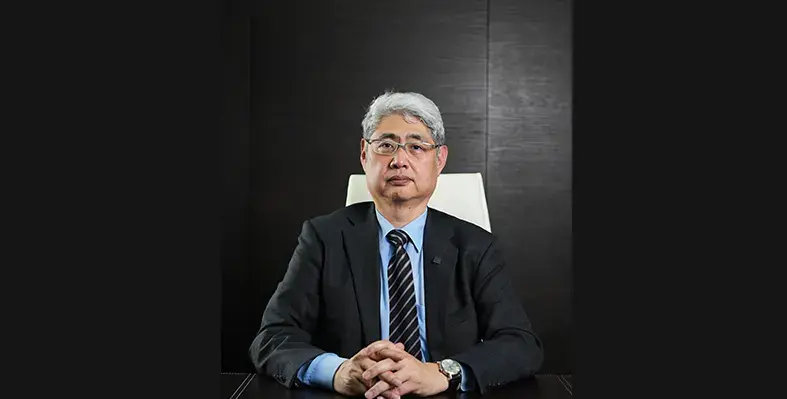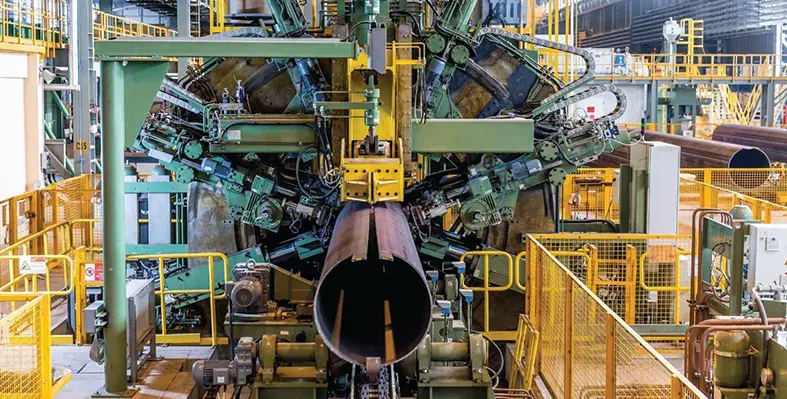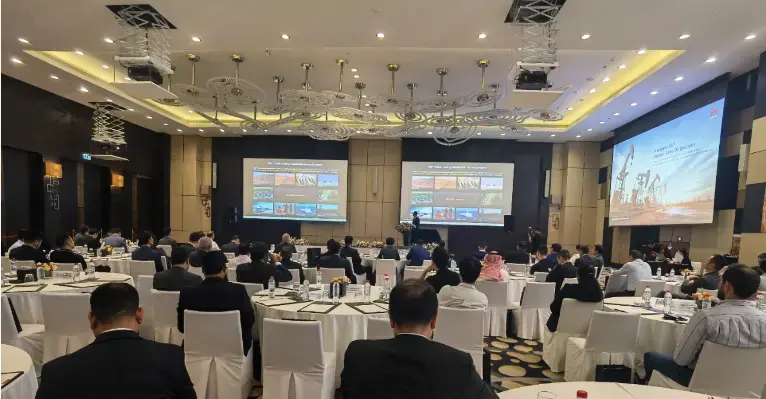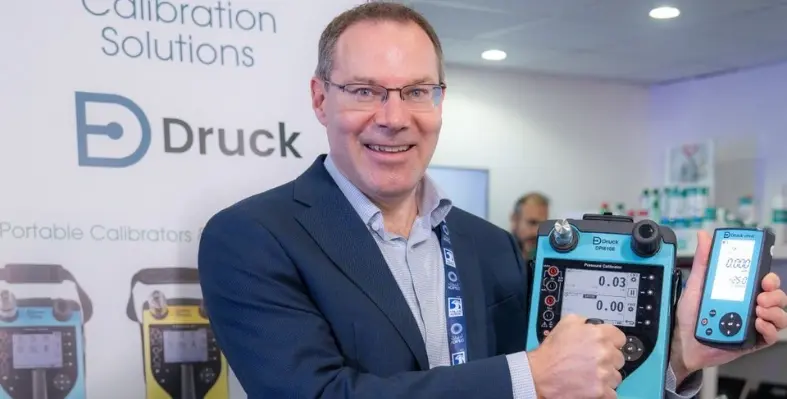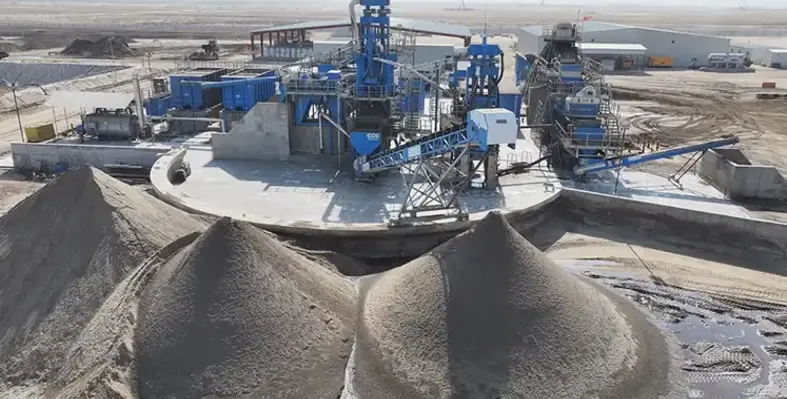In The Spotlight
Huawei and partners launch joint solutions for Intelligent Oil & Gas
The Abu Dhabi International Petroleum Exhibition & Conference (ADIPEC), one of the world's largest and most influential oil & gas events, was held from November 3 to 6
Under the theme Energy. Intelligence. Impact., this year's conference brings together global energy leaders to discuss AI applications in areas such as exploration optimization, carbon emission management, and supply chain intelligence. BGP, a company specializing in geophysical exploration under CNPC jointly exhibited with Huawei, showcasing their achievements in oil & gas exploration to global industry customers. These included collaborative efforts in building the Kunlun large model, the adaptation of Kunpeng with the GeoEast platform, and the application of AI with full waveform inversion (FWI).
During ADIPEC, Huawei hosted the Global Intelligent Oil & Gas Summit 2025, bringing together oil & gas customers, international EPC contractors, Chinese enterprises, and partners from the Middle East, Central Asia, Asia-Pacific, and Africa to share their latest achievements and experiences in intelligent development. Huawei and four partners also unveiled joint innovative solutions for intelligent oil & gas on a global scale.
"We are now experiencing an unprecedented intelligent revolution. But using AI isn't just about following trends. It's about creating real value in efficiency and safety,” Linda Han, Vice President of Huawei and CEO of Huawei Oil, Gas & Mining BU, stated in her opening address. “ICT development must align with AI scenarios that solve real operational challenges. Let practical applications steer digital evolution. Match technology with business needs so valuable data can empower AI for better quality and safer production."
Yue Changqing, President of BGP International, shared in his keynote speech that "Huawei's leading ICT in storage, computing, networking, and AI are driving BGP towards digital and intelligent exploration." He detailed that based on Kunpeng, they have developed a new GeoEast architecture and optimized its performance, increasing processing efficiency by 2-3 times compared to the original. Leveraging Huawei's OceanStor distributed storage, seismic data storage performance improved by 30%, and resource utilization increased by 50%. Using Huawei's MindSpore AI4S suite, computational efficiency for the 2D acoustic wave equation increased more than fivefold, with the 3D acoustic wave equation algorithm soon entering production verification. "Moving forward, leveraging BGP's business insights and Huawei's ICT expertise, we will continue to deepen collaborative innovation in geophysical exploration to pioneer a new paradigm for intelligent exploration and production," Yue added.
OQ Gas Networks SAOG (OQGN), Oman's exclusive natural gas transporter, has successfully completed a Proof of Concept (POC) for an AI-powered Smart Intrusion Detection System (IDS), developed in collaboration with Huawei. The initiative aims to shift from traditional manual patrolling to a proactive, intelligent monitoring solution as part of OQGN's business transformation through innovation and digitalization. The system utilizes Huawei's digital site perimeter protection technology, providing 24/7 intelligent detection and early warnings of external risks such as fires, excavation damage, and unauthorized intrusions. During the POC phase, conducted on a selected pipeline segment, the system achieved over 95% detection accuracy and delivered a 70% reduction in manual inspection workload. Following the successful trial, OQGN and Huawei are partnering to scale up the system, a milestone that earned OQGN the Huawei Oil & Gas Industry Best Joint Innovation Award.
Prithwi Mukhopadhyay, Engineering Manager of Bilfinger Engineering Middle East, shared insights on their practices in oilfield engineering related to digitalization, virtualization, and the enhancement of HSE excellence and operational efficiency. For example, he mentioned using digital twins of oil wells to simulate drilling scenarios for optimizing performance and predicting failures. They also utilize sensors and AI-driven platforms monitor drilling parameters and adjust operations in real time to reduce downtime and improve safety. The company operates remote control rooms that monitor offshore platforms virtually, reducing the need for an onsite team. He stated that Huawei's ICT strengths in hardware and software, coupled with digital certification programs, have further enhanced the cultivation of digital talent, advancing oilfield engineering models towards "digital leadership."
Launching Global Joint Innovative Solutions for Intelligent Oil & Gas with Four Partners
At the summit, Huawei, together with ANTON Oilfield Services Group (ANTON), SUPCON Technology Co., Ltd. (SUPCON), Shenzhen BH Energy Technology Development Co., Ltd. (BH Energy), and Beijing RayChange Information Technology Co., Ltd. (RayChange), jointly launched innovative solutions for intelligent oil & gas.
Huawei and its partners focus on common, high-value scenarios in the oil & gas industry, jointly developing scenario-specific solutions and products to help global oil & gas customers achieve efficient production, operations, and management.
ANTON: By developing intelligent oil & gas platforms, AI application products, and digital, integrated solutions for oilfield technology and management services, the company addresses challenges in industrial AI application such as difficult implementation, high costs, and low standardization.
SUPCON: Leveraging Huawei's computing infrastructure, SUPCON's Industrial Embodied Intelligence system, centered around the Time-series Pre-trained Transformer (TPT) model and the innovative Universal Control System (UCS), provides a basis for AI applications in core industrial scenarios like anomaly early warning, operational optimization, and control optimization. This empowers the entire oil & gas industry chain to adopt unattended operations and remote intelligent control.
BH Energy: By creating intelligent well control systems and smart edge controller products, the company helps achieve autonomous optimization and real-time data analysis for oil wells, enabling oilfield enterprises to enhance production capacity and reduce energy consumption.
RayChange: To address various engineering requirements in the oil & gas industry, the company collaborates with Huawei to develop digital and intelligent management platforms for oil & gas projects using the Deep Twin platform, creating a digital foundation for intelligent oil & gas operations.
In his closing remarks, Deng Bi, President of Huawei's Oil & Gas BU, reiterated Huawei's commitment to collaborating with partners and customers alike. Together, they will build a thriving global ecosystem and develop intelligent solutions that add value to core oil and gas scenarios, upholding the spirit of the summit: "Drive Data to Barrel, Embrace Intelligence to Grow."
ADIPEC 2025: Druck highlights its latest range of solutions
At ADIPEC this year, Oil Review Middle East spoke to Gordon Docherty, vice president of Druck. Docherty talked about the company's products, technological solutions and prospects in the Middle East. Read on:
How do you see Druck connecting with customers and partners in this dynamic region?
It’s a real pleasure to be at ADIPEC for the first time. The conversations happening here are not just about today’s challenges but about how we can collectively accelerate progress through smarter, more sustainable technologies.
And I think that’s where Druck’s pressure measurement technologies fit in. The ability to capture precise and dependable pressure data and calibration not only boosts productivity but also helps organisations eliminate inefficiencies and reduce emissions.
For Druck, ADIPEC is an invaluable opportunity to connect directly with our partners, customers and potential customers across the globe, not just the Middle East. This region has always been central to the global energy landscape, and we see tremendous potential for collaboration; particularly as companies focus on digital transformation, operational efficiency, and safety.
We came here to listen, share our expertise, and explore how Druck’s advanced pressure measurement and calibration solutions can help our partners enhance reliability and performance in their operations. I have to say that the positive feedback, and the interest in our solutions, in particular our handheld portable calibrators, far outweighed our expectations.
It’s also been fantastic to spend time with our regional channel partners who play such a vital role in ensuring that Druck products reach every corner of the planet. Seeing the strong engagement they have with customers reinforces how important these relationships are in ensuring our technology and support are available where and when they’re needed. Their commitment and local expertise are key to our continued success in the region. ADIPEC provides a great platform to celebrate that collaboration.
What are the main applications for Druck pressure sensors and calibration equipment in the oil and gas industry, and the main challenges they are designed to address? Are there any products on display you would like to highlight?
Druck pressure sensors and calibration equipment play a critical role across the oil and gas value chain from exploration and drilling to production, transportation, and refining. Druck instruments ensure accurate measurement and control in pipeline monitoring, gas compression, storage, and refining processes.
For instance, Druck sensors deliver precise pressure and temperature measurements throughout the oil and gas extraction process. Our subsea sensors are engineered to operate reliably for up to 30 years, enduring the extreme conditions found at depths of 3,300 m beneath the ocean surface. The advanced technology required to consistently provide accurate data in such demanding environments over decades is truly remarkable, underscoring our commitment to long-term performance and reliability
Meanwhile, our calibrators support these applications by providing precise, traceable pressure measurements that help customers maintain compliance with international standards, improve operational efficiency, and ensure safety.
Our solutions are engineered to excel in the most demanding and unpredictable environments, such as high pressures, high temperatures, vibration, and corrosive media all of which demand exceptional sensor stability, repeatability, and long-term reliability. We also address the industry’s need for digitalisation and reduced downtime by integrating smart calibration solutions and digital communication capabilities that support predictive maintenance and remote diagnostics.
At ADIPEC this year, we showcased Druck’s latest calibration and instrumentation solutions, including the handheld DPI 610E, the high-performance PACE 5000 E and 6000 E pressure controllers, and the compact UPS 4E loop calibrator. These instruments are designed to deliver unmatched accuracy, reliability, and connectivity for both field and lab applications, and are widely used for instrumentation commissioning, asset maintenance and process optimisation across the Oil, Gas and Energy value stream.
How do you view prospects for the development of Druck’s business in the Middle East?
The Middle East is a very strategic region for Druck, and we see strong prospects for business development here. The region continues to invest heavily in oil and gas exploration, refining, and infrastructure modernisation, while also advancing its digital transformation and energy transition initiatives. These trends align with Druck’s core strengths delivering high-accuracy, reliable pressure measurement and calibration solutions that perform in the most demanding environments. Our sensors and calibration equipment are already trusted in critical applications such as wellhead monitoring, subsea systems, and pipeline operations across the region.
As operators focus more on safety, operational efficiency, and predictive maintenance, Druck’s digital calibration technologies and smart sensors provide real value; helping customers reduce downtime, ensure compliance, and extend asset life. We also recognise the importance of strong local presence and partnerships in the Middle East. Expanding our service and support capabilities locally is a key part of our strategy to deliver faster response times and build long-term customer relationships. Overall, we view the Middle East as a growth market where Druck’s proven technology, reliability, and commitment to customer success position us very well for the future.
How do you think measurement and instrumentation technologies will evolve in the future?
At Druck, innovation is absolutely central to how we operate. For more than 50 years, we’ve built our reputation on engineering excellence and pushing the boundaries of pressure measurement performance. Today, our focus is on integrating digital intelligence, connectivity, and sustainability into our technologies; ensuring our customers can rely on accurate, stable data while optimising operational efficiency and reducing environmental impact. Innovation for us is not just about new products, it’s about continuous improvement, collaboration with our customers, and anticipating the challenges they’ll face tomorrow. By integrating innovative calibration technologies and digital intelligence, Druck aims to deliver the next generation of measurement solutions that empower industries to operate more safely, efficiently, and responsibly.
What are your biggest takeaways from ADIPEC 2025? Are you planning to visit again?
ADIPEC 2025 has been an inspiring and highly productive experience, showcasing the energy industry’s commitment to innovation, digital transformation, and sustainable operations. I’ve been particularly impressed by how companies, including many of our customers, are leveraging smart measurement technologies to improve efficiency, safety, and reliability – it has reinforced the important role Druck’s pressure sensors and calibration solutions play in supporting these goals. Meeting with our channel partners and seeing the strong engagement with customers highlighted the value of local collaboration in the region. Most importantly, seeing the exceptionally strong interest in Druck technologies was extremely rewarding. Overall, it’s been a fantastic event, and I’m very much looking forward to coming back to continue these conversations and explore new opportunities with partners and customers alike.
Restoring contaminated land through washing technology
A new CDE report, produced in association with Oil Review Middle East, highlights the benefits of soil washing technology for the remediation of hydrocarbon-contaminated land
Hydrocarbon-contaminated land poses a significant threat to ecosystems, economic development and human health. The Middle East region is one of the most affected, given the predominance of the oil and gas industry and contamination from legacy conflicts.
The new report, titled 'Restoring oil-contaminated land through washing technology' discusses the scale and impact of the problem and how advanced soil washing technology not only effectively restores contaminated land with relatively low carbon footprint and operating costs, but turns it into re-usable materials, converting waste into a valuable resource.
The Middle East therefore presents a significant opportunity for this technology, given governments and industries are increasingly prioritising sustainable construction, land remediation and circular economy practices.
The report includes real-world case studies from the region. In Kuwait, two CDE soil washing plants have to date processed more than eight million tonnes of oil-contaminated land, producing re-usable sand and aggregates with less than 1% residual contamination. While in Saudi Arabia a CDE plant converts oil-impacted waste into reusable materials, aligning with Vision 2030 circular economy objectives and sustainable construction initiatives.
Download the report, 'Restoring oil-contaminated land through washing technology'.
OWI MENA
Venue:
Bab El Qasr Hotel, Abu Dhabi
Dates:
17-18 September 2024
Website:
https://events.offsnet.com/OWI-MENA-2024










